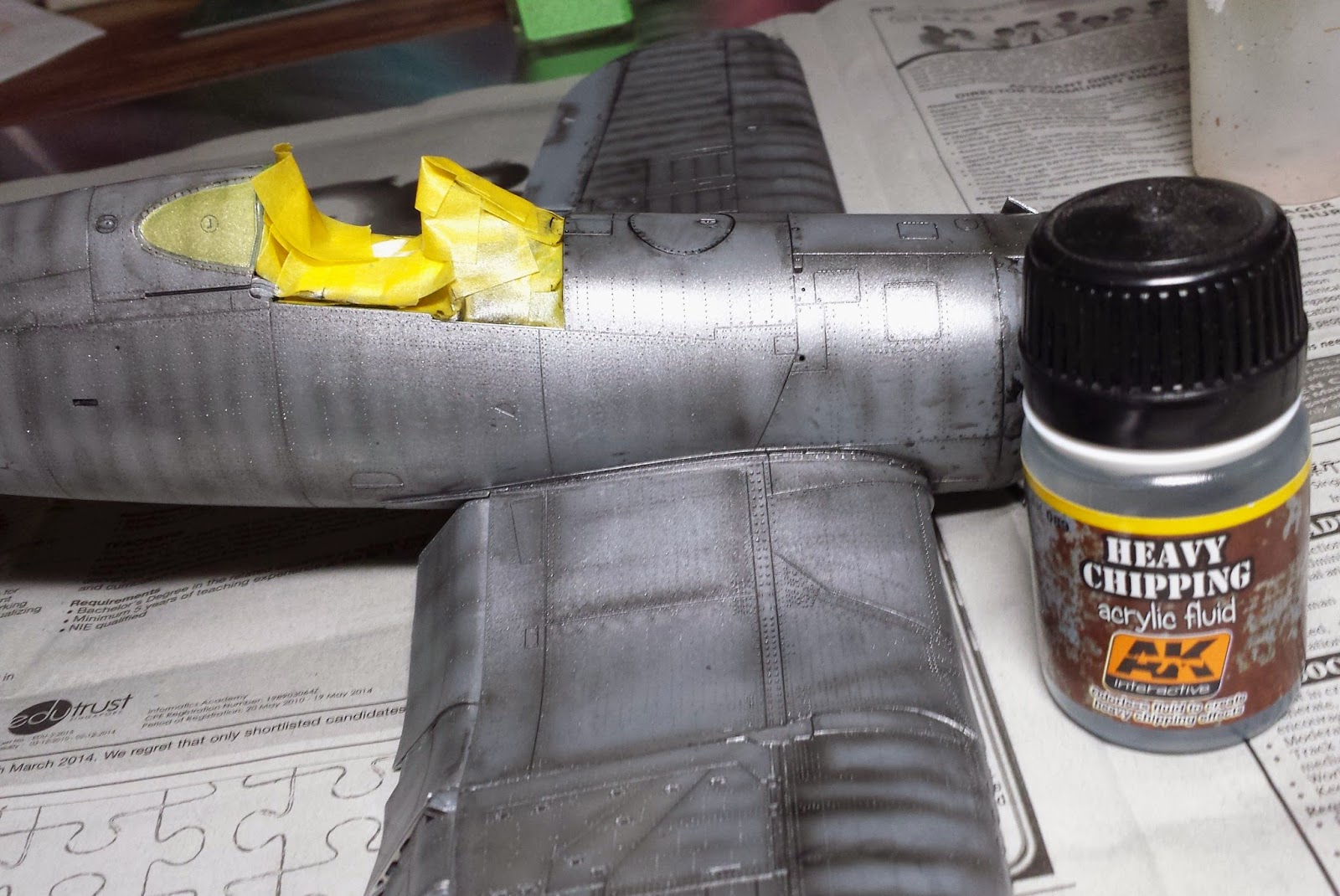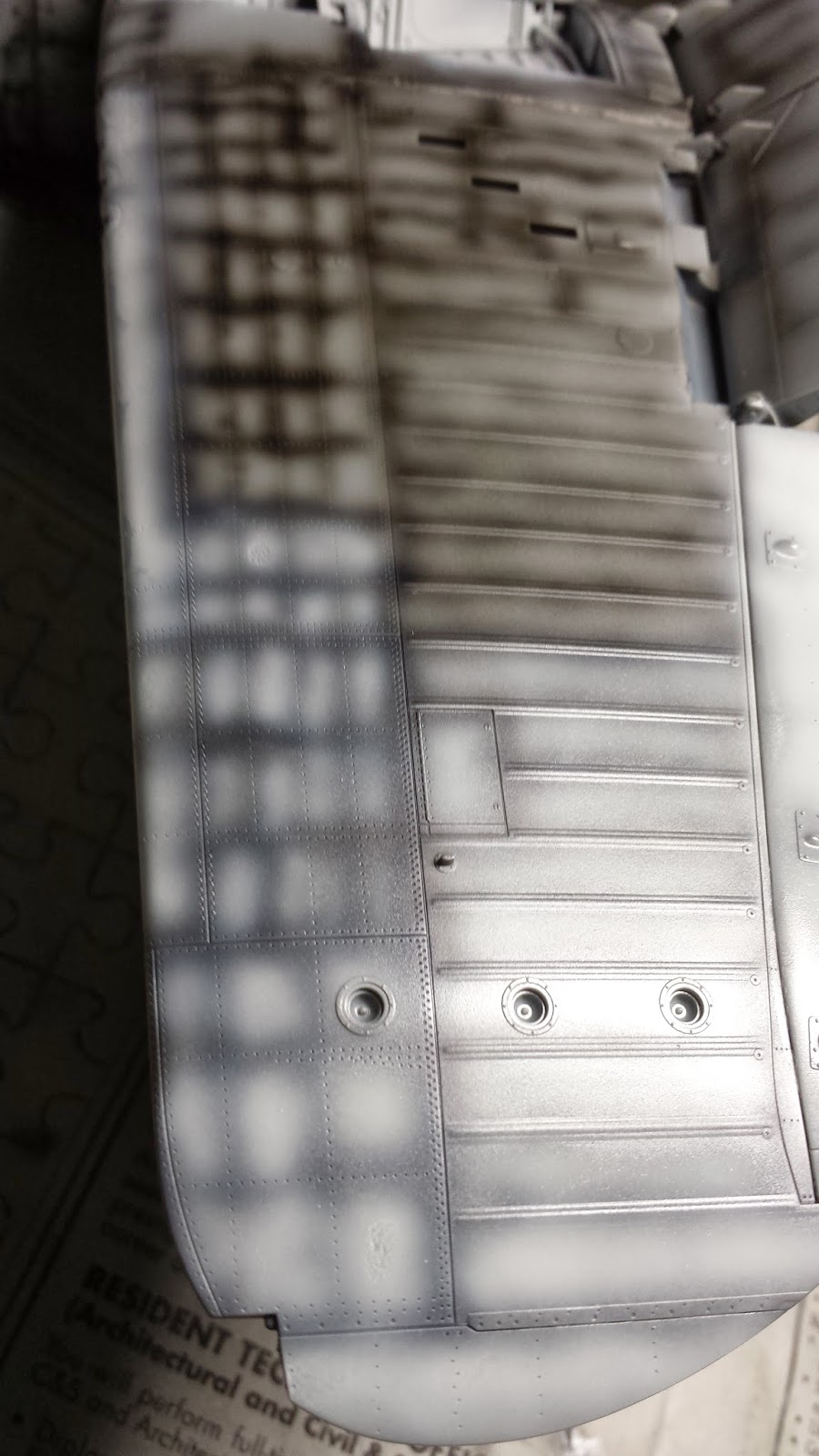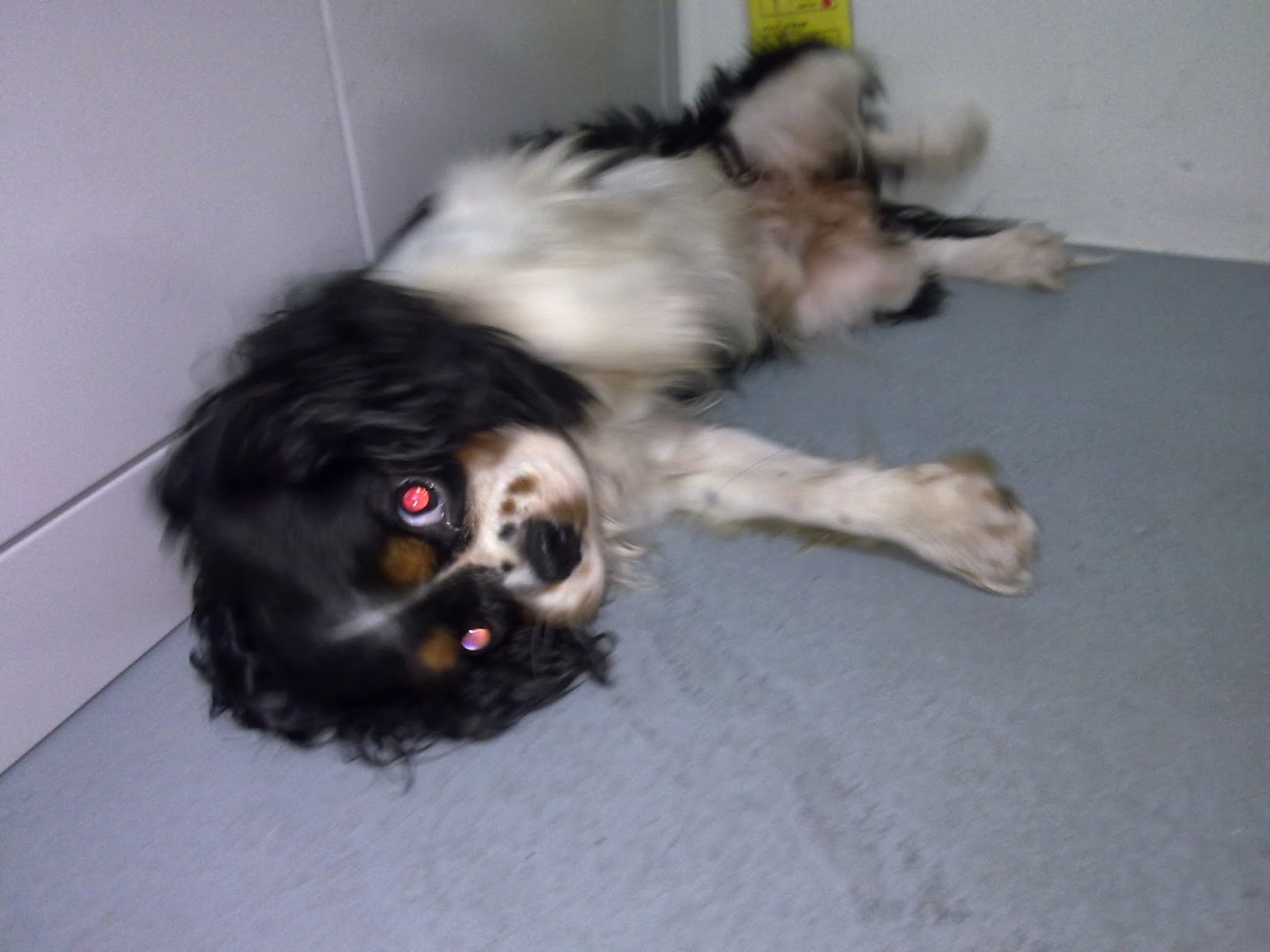In order to achieve chips proper, I have to get some silver base into the preshaded plastic. I chose to use water based Folk Art Sterling. Once dry, I can then coat this with water soluble hair spray and then chip. Trick is also to let enough time for the hairspray to dry in order to achieve a robust layering that is not easily dislodged by Enamel based Tamiya Panel Accentuators. I like to paint these on and then use the Enamel Thinners from Tamiya to streak and broom brush them to the sides towards the panel lines.
In Part 3 I forgotten to include a picture of how the engine has been masked. Basically, I cut up a tissue paper into a few parts and folded them into bolsters as discribed earlier and stuffed them and then cover the top surface with Tamiya Masking tape. This helps to prevent "ACCIDENTS", which is a disaster, after all the efforts we spent to paint and chip the engine. In this picture you can see the areas where I wanted the chips to occur painted in Sterling Silver.

Then the sides of the cockpit area, the walkways, the leading edges plus the engine cowlings are all painted to diluted AK Interactive's heavy chipping fluid. This is set aside to dry for 24 hours. Which is not enough, After weathering it later, I found the paint to be too soft and some figure prints were showing. I had to respray that section and set it aside to dry while I go get myself tortured in a 4 hours speed chase all over the island 5 am this morning! On bicycles of course. We took an extremely hilly route through Tampines Viaduct, old Lower Pierce, Mandai, Woodlands Industrial Park, to Admiralty Park, down Admiralty, through Yishun, then the windy Seletar Island next to the aerodome, all the way through Ponggol then Hougang and Old Tampines Road and then home! Very shag! Elevation gained today is about 800m in total. Nothing but cheonging with 3 other guys, 2 of which are in their twenties, half my age, and weight, it takes its toll after a while.

Once coat has dried, I tried to test the spray painting the bottom off white grey to see the effect.
Then I started to work in the colour at the bottom in glossy finish slowly. 30% paint, 70% Mr. Colour Thinner. It is sprayed with very low pressure. However, I have a faulty tigger mechanism in my Creos airbrush which is a huge frustration to use. The air trigger gets stuck downwards at very low pressures and I have to control the pull back to activate the paint on and off. Meaning, you can get overshoots easily, so, it took 3 hours to paint the bottom, which otherwise, I could have done in 1 without the problem. I had another 0.2mm Tamiya airbrush made by the same guys, however, this one, has an open top and spills easily with only 2cc content cup, can be a frustration as the paint may spill and its evaporating all the time. You cannot work on odd angles too. Unlike the Creos Mr. Colour 272. Without the trigger problem of course.

Tail fins carefully painted with the light grey. Leaving some areas showing huge shades. I wanted the strong contrast as the washes later are going to affect the contrast a lot, thereby, will blend it somewhat.

Bottom areas all clouded and happy. I read the article by Spencer Pollard some months ago on Model Aircraft International. The wheel bays, the cockpit rear window areas were painted wrongly with interior Olive Zinc Chromate. It should be bottom colours for the wheel wells, and body colours for the cockpit rear windows. In the rush to build the model, he also did not paint the interior parts of the rudder and filter areas in powdery pink, which is a mix of Rosa from Tamiya and Hull Red from Creos. I have written articles before for them, the dead lines, the need for clean background, moving my job back and forth from my table to the studio and then back, is a major headache. Also, the subject matter, to publish the newest kit before the other mags do it is also added pressure. I now prefer to let model making remain a hobby and forget the hectic scheduling of trying to write for magazines. In the end, I make better models and use this platform to share with those who love following my blog, which is almost on an "by invitation" only basis.

Part of the wing that I tested the white is masked in order to allow me to paint it in the upper colours. This is done with extreme care not to rip off paint later as parts are coated with AK Interactive Chipping Acrylic Fluids.
The dividing edge is masked with blue tag for a soft edge finish. The remaining areas covered with Tamiya Masking tape.
The top colour is applied. The shadows has greatly been subdued. This is then painted over with Tamiya Black Panel Line Accentuators. And then boom brushed to the sides to create lines and uneven surface texturing.
The same wing after broom brushing off the washes. The rivets, the shadows and the gradual tonal differences are beginning to create an interesting pletora of hues of the same colour.
The panels are clouded over with lighter tones of the same colour giving emphasis on to top surfaces. The refueling area, I need to cloud with some pink tones later to simulate discolouration by spilled fuel on paint.
Side view of the highlights. I try to preserve the verticle rivet lines to create variations in the skin, even though some parts of this is covered with decals, I wanted to have the option to position the decals with the freedom to move it around without too much ACCIDENTS from happening!
The harsh contrast tones are then subdued with an overspray of the highlight colour with more dilution with Mr. Colour Thinners. Now, the model is read for decals and chipping later. Enough done for the week. I gotta to catch Captain America!! See you the next post.















































